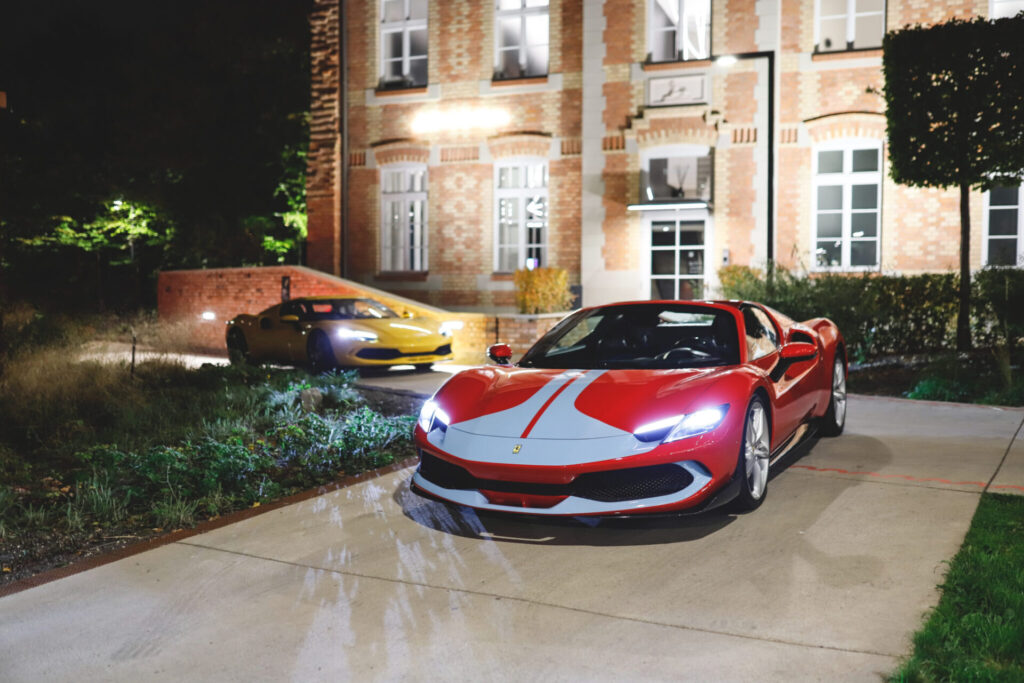The Ferrari 296 is powered by the first V6 engine in the 76-year history of the brand’s road models. In its creation, the Italians were motivated by a bold idea, which can be unravelled by exploring the fascinating technical details of its design. But you don’t need to know all of them: all it takes is just one rule of thumb for you to always be able to recognise a V-type engine based on technical data alone.
Since the Ferrari 125 S was built in 1947 until 2022, all road models of the iconic Maranello brand have exclusively used engines of two configurations: V12 or V8. The Italians are continuing this tradition and keeping both engines in their range; however, they now have a new strong contender: an ultra-compact and ultra-efficient V6 unit.
Naturally, this is not the brand’s first experience with an engine of this type. Indeed, Ferrari achieved major racing success with the V6 starting as early as 1957. It has also used the V6 in Formula 1 since 2014. The fact that this is the optimum solution in terms of performance was confirmed by Ferrari’s decision to use the V6 in the 499P prototype, with which Ferrari is now returning to the top endurance racing class and with which it will enter this year’s 24 Hours of Le Mans.
There is no denying that Ferrari was motivated to put the V6 on public roads by the constantly increasing emissions standards. However, this downsizing has worked out well for the brand. The result is the F163-type unit, which already achieves an astounding power density: with a displacement of three litres and six cylinders, it generates a full 663 hp, which translates into an output of 221 hp per litre.
And yet, it is merely the dawn of its career — and what a career it is bound to be! The internal Ferrari documents at Maranello contain a chart showing the potential for the development of the brand’s engines in the coming years. While the line showing the trend for naturally aspirated V12s is the longest, it stays virtually horizontal. Though time goes by, the V12’s power hardly increases at all. The V8 trend line emerges later and is set at a higher angle. Meanwhile, the V6 trend line only begins last year, but it is pointing almost vertically upwards going forward. This engine is yet to surprise us in many ways.
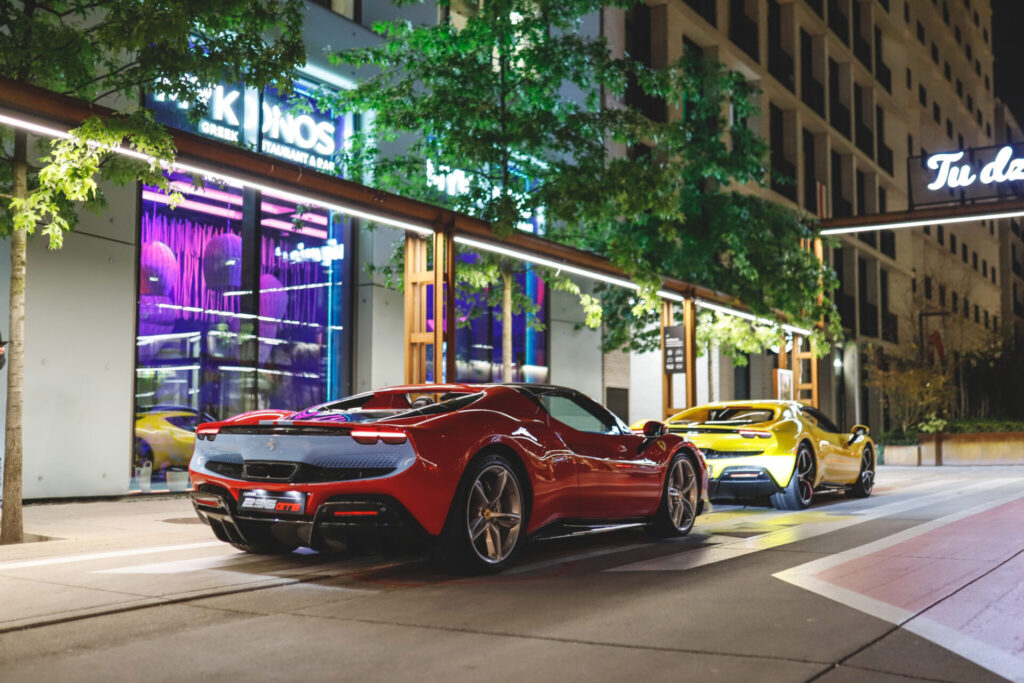
It has already caught me by surprise during these several interactions, during which we spent more than a thousand kilometres together with the 296 GTB and 296 GTS models on racetracks, motorways and in cities. I recall not expecting much from this V6 before my first encounter — I figured I would just be getting to know Ferrari’s cut-down V8 stripped of two cylinders. By no means is this a metaphor: after all, many V6 engines have been built in this mediocre manner over the past two to three decades, including by renowned manufacturers.
Ferrari, however, is an engine maker of an entirely different league. It is no coincidence that those at the Maranello factory have dubbed this new technical masterpiece the Piccolo V12 — a small V12. Notably, this nickname was coined by the engineers during its development, and not by the marketing department.
Now, I could pen colourful descriptions here of how the new V6 has charmed me with the way it builds up power, the tuned sound frequency and the overall character really much more akin to the brand’s flagship naturally aspirated V12 rather than the turbocharged V8. Still, I prefer to point you to specific figures and technical solutions instead of my subjective impressions. They are worth exploring not only for the sake of this engine but also in a broader sense: to understand the principles by which V-type engines are created and how to distinguish between those made without any compromise and those made through corner-cutting.
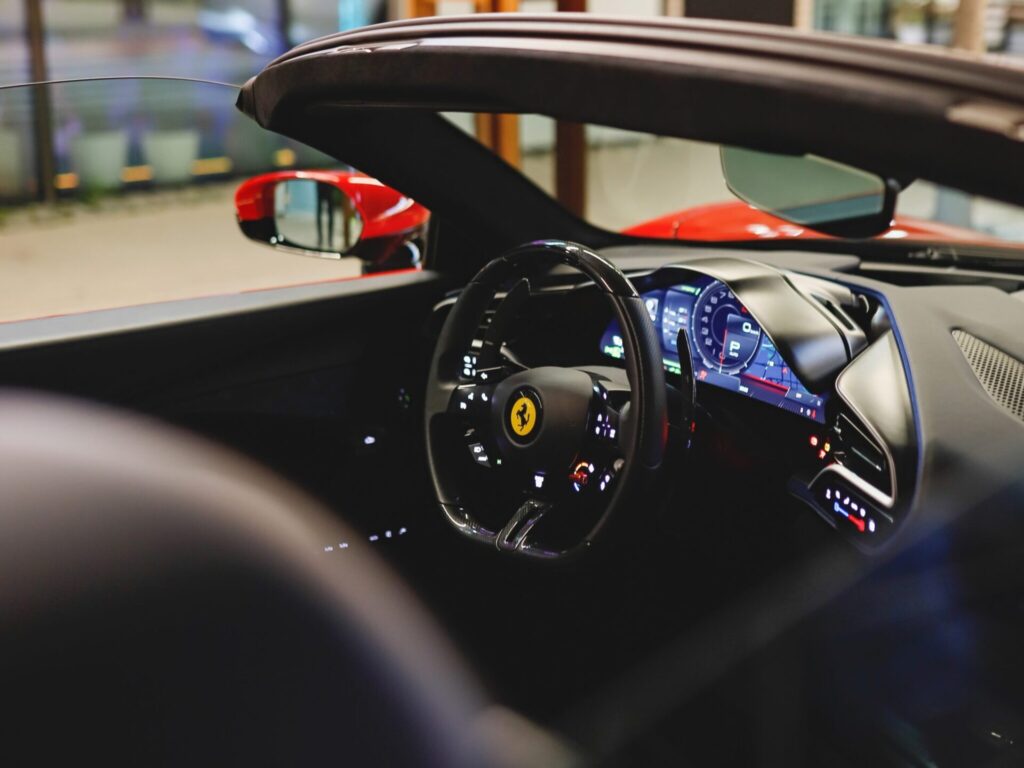
The key to quickly recognising an engine is to know the V-angle between the cylinder banks. In theory, V-type engines can be set up at any angle with any number of cylinders, and history has indeed seen diverse solutions in this regard, ranging from engines with such a small V-angle that they looked almost like inline engines (the so-called VR configuration), to unusual combinations like the 75° V8 with a 180° crank.
However, mathematics makes it clear what V-angle is most favourable for a V-type engine with a given number of cylinders. It can be calculated using the following formula: 720°/number of cylinders. It shows that for the V12, the optimum V-angle is 60°, for the V10 it is 72°, for the V8 it is 90° and for the V6 it is 120°.
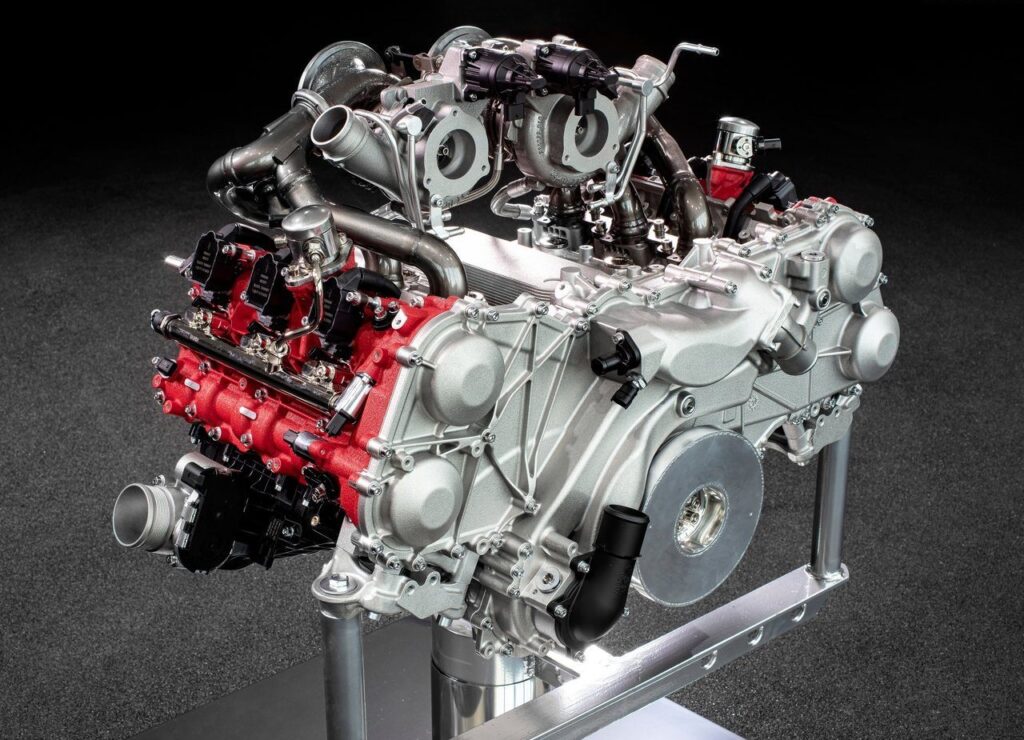
Minor deviations from these values are possible. Ferrari itself has its reasons why the V-angle on its award-winning flagship V12 engine is not 60° but 65°. However, it is one thing to optimise in this way and another to adopt the V-angle of another configuration. This allows everyone to uncover the informal path that led engine makers to make specific design choices for the given engine. It is no coincidence that many of the current V10s or V6s on the market feature a 90° V-angle, which is not optimal for them but arose from the tacit compromise of deriving such engines from pre-existing, more popular V8s (in a nutshell, they either gained or lost two cylinders as required).
What are the drawbacks of this approach? Uneven pressure pulses in the exhaust system and inferior balance, leading to vibration and reduced speed, thereby resulting in lower comfort levels and less power. Below is an image illustrating the issue:

Refusing to accept such limitations, Ferrari has built a new V6 from scratch based on principles similar to those used in traditional V12 design. Compared to them, it has half as many cylinders and twice as great a V-angle, bringing similar performance characteristics (including unparalleled revs as high as 8500 RPM) and, from a driver’s perspective, a surprisingly V12-like effect, markedly different from V8s and the trade-off laden V6s derived from them.
The same mathematical equations show that for the V6 and V12 units, there remain two other attractive concepts for cylinder configuration: 180° or 0°, i.e. an inline configuration. A 180° V12 engine could be found in Ferrari’s well-known model line-up, with its brightest star being the Testarossa model. Though an inline-twelve engine would be difficult to implement for obvious reasons, an inline-six seems sensible. Indeed, BMW itself has been promoting it for many years and has now been joined by other manufacturers in this market area, with the latter replacing their V8s with R6s.
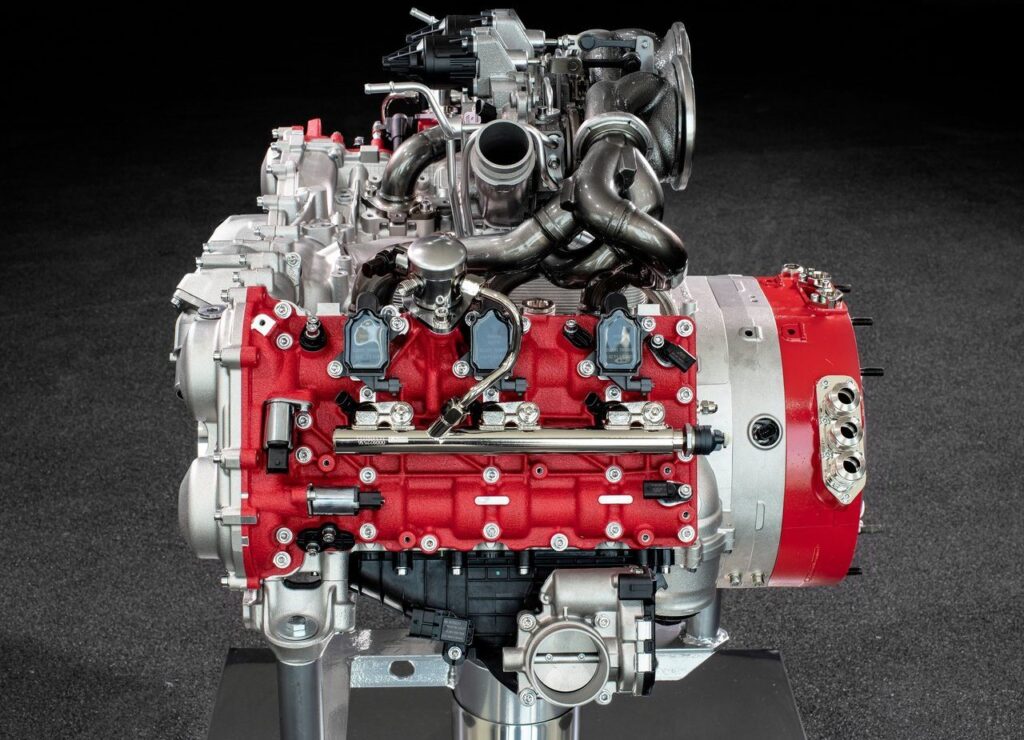
Yet, Ferrari’s 120° V6 engine is a design on a whole other level of technical sophistication. The configuration used has implications that go beyond the engine itself. First, it allows the turbochargers to fit between the cylinder rows in what is known as a “hot V” layout, which brings drive efficiency to a new level. Secondly, it enables the use of a compact, half-as-long crankshaft with only three crankpins (each shared by two connecting rods).
These solutions helped make Ferrari’s new V6 so compact that the wheelbase of the 296 GTB and GTS models powered by this engine has been shortened by as much as 5 cm compared to the long-standing, V8-powered Berlinetta line-up. In this way, Ferrari’s new V6 is not only distinguished by the ferocious throttle response and piercing sound characteristic of the brand’s traditional V12s but also — for the first time — by such a marked improvement in agility and responsiveness. So the next time you’re wondering where Ferrari’s continued competitive edge comes from, you already know that it’s neither coincidence nor magic… even if these uncompromising engineering solutions sure make it all look like sorcery!
